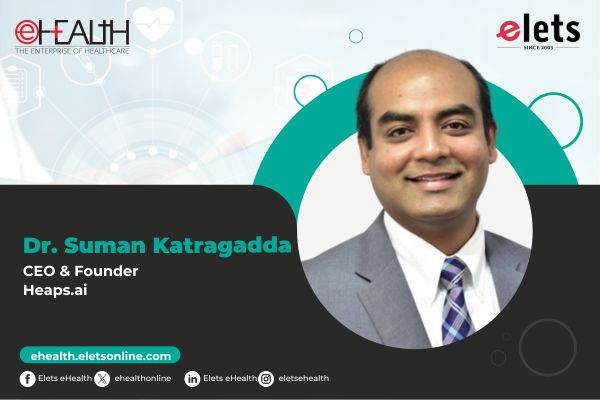
Covid 19 has raised exceptional demands on national Health Systems(HS). Those HS that were smart and well-endowed ‘before’ the pandemic, responded smarter and handled the crisis with lesser blood lost in the field. As life returns to its new normal, all nations shall review and redesign their health systems to service the post Covid19 world.
In this background, the long pending call for transformative reforms in HS in India should be heeded. The National Health Policy (NHP) 2017 recommends many reforms[i]. This policy came 14 years after its previous edition of 2002 (which had come nineteen years after the earlier NHP 1983). The intervening period 2002 to 2017 saw two swings of the political spectrum in central government (NDA to UPA to UPA to NDA). During this period,health reforms were steered under umbrella of the National Rural Health Mission (2005) (NHM). Over the years, enthusiasm towards the “mission mode architectural correction” under NHM waned and pace of reforms slowed. After 2015 many new project mode initiatives were launched but no transformational systemic road to reforms emerged.

Until the NHP 2017.

Following the NHP 2017, three major inputs have paved the road for HS reforms in India. These are:The recommendations of Health Stack in July 2018[ii],the National Digital Health Blueprint in April 2019 prepared by a committee chaired by J Satyanarayana[iii]and recommendations of the High Level Committee on Health convened by Dr Randeep Guleria to advise the 15th Finance Commission in August 2019[iv].

HS reforms in India, post Covid19, shall gain from these path breaking knowledge inputs especially those relating to digital health and legal framework for health care. Let us visit the recommendations in these documents and examine the contours of reforms they envisage. But first, the policy document.

National Health Policy (2017)
NHP 2017 acknowledged four key changes in the context of public health in India. Firstly, the growing burden of non- communicable diseases and some infectious diseases, secondly the emergence of a robust health care industry, thirdly, growing incidences of catastrophic expenditure due to health care costs and fourthly rising economic growth that was enabling enhanced fiscal capacity amongst citizens.
NHP 2017, sought to “inform, clarify, strengthen and prioritize the role of the Government in shaping health systems in all its dimensions”. It examined the legal Framework and also debated whether health can be made into a fundamental right- in the way that was done for education. The policy questioned whether India has reached the level of economic and health systems development so as to make this a justiciable right.
NHP 2017 also envisaged creation of a digital health technology eco-system aiming at developing an integrated health information system and gave some attention to:
- Health Technology Assessment:Development of institutional framework and capacity for Health Technology Assessment and adoption so that technology choice is participatory and is guided by considerations of scientific evidence, safety, consideration on cost effectiveness and social values..
- Digital Health Technology Eco – System: Recognising the integral role of technology (eHealth, mHealth, Cloud, Internet of things, wearables, etc) in the healthcare delivery, a National Digital Health Authority (NDHA) to regulate, develop and deploy digital health across the continuum of care.
- Application of Digital Health: Utilization of National Knowledge Network for Tele-education, Tele-CME, Tele- consultations and access to digital library.
The sensitivity of the policy document towards using information technology for strengthening the health care ecosystem paved way for greater participation of health technologists and software geeks.
The National Health stack (July 2018)
The NHS was proposed by NITI Aayog as a national platform for digital health records. In its strategy paper, Dr Vinod Paul, Member, stated: “The NHS …. represents a holistic platform that supports a multitude of health verticals and their disparate branches, and is capable of integrating future IT solutions for a sector that is poised for rapid, disruptive changes and unforeseen twists.”
The NHS gave framework for:
- National health electronic registries (single source of truth to manage master health data of the nation)
- Platform for coverage and claims (to support large health protection schemes)
- Federating personal health records (to ensure that patients could access their data and the same was available for health research)
- Establishing national health analytics platform (to collate the multiple data sources and inform health policy )
- Other horizontal components (like unique Digital Health ID, Health Data Dictionaries and Supply Chain Management for Drugs, payment gateways etc)
The NHS gave the baton to the private sector to build API and utilities on the platform. In this paradigm, government would manage the platform and private entrepreneurs shall build a service delivery ecosystem based on that. It was a paradigm shift in management of the health system. The handing over of baton to private technology players was not missed by privacy and health rights activists who protested against the design[v]. It did not help that a private team of technology gurus at iSPIRT was incubating the ideas of the NHS. That the drivers had no experience of health care delivery was seen as a major deficit disqualifying them from establishing the platform. A wider reform towards digitalisation of the health ecosystem was needed.
National Digital Health Blueprint (Apr 2019)
The MOHFW developed this blue print, to provide an actionable framework for implementation of the Health stack. The blueprint proposed a new entity called National Digital Health Mission (NDHM) to steer the development of National Digital Health Eco-system (NDHE) on the lines of the AADHAR framework under UID Authority and the GST framework under the GSTN. The blueprint envisaged creation of core infrastructure for digital health data, promoting the adoption of open standards, creating a system of personal health records, and following the principles of cooperative federalism. The blueprint sought to enhance the efficiency and effectiveness of governance at all levels and improve quality of health care by leveraging the information systems already existing in the health sector
The NDHM has several building block layers[vi] viz:
- Infrastructure (networks, clouds)
- Data Hubs (personal health identifier and records, health master directories,
- Technology building blocks (anonymisers, consent managers, health locker, information exchange, analytics, visualisation)
- Application building blocks (based on data using the infrastructure and the technology building blocks)
- Access and delivery (call centres, India Health Portal, social media, apps)
- National Health standards (governance,strategic control, compliance)
- Command, control and communication centre (single contact point for managing public health emergencies )
The NDHM uses a federated structure to generate a universal health Id and maintain electronic health records. The data and health informatics standards for this purpose were to be designed. The Mission also envisaged registries for NCD and directories of providers, professions and para medicals. This was to take place with a specific legislation for data management.
The Mission laid out deliverables that extended over 12 to 18 months and its final start almost exactly coincided with the arrival of the Covid 19 crisis. Meanwhile greater role to the central government in delivery of health care in the states received a shot in the arm by the 15th Finance Commission.
High Level Group on Health, the 15thFinance Commission (August 2019)
This group comprised senior doctors including Dr. Randeep Guleria, Director, AIIMS, Dr. Devi Shetty, Chairman, Narayana Health City, Bengaluru and Prof. K. Srinath Reddy, President, Public Health Foundation of India. The group was mandated to recommend on regulatory framework, human resources, public health expenditure, strengthening the delivery system and as always the last but not the least, Integration of AYUSH.
The group made some astonishing recommendations:
- Bring public health and hospitals in the concurrent list of the 7th schedule of the constitution from the existing state list.
- Declare health as a fundamental right on 75th independence day in 2021
- Restructure MBBS curriculum to make it competency based and introduce small courses on wellness, basic surgery, anaesthesia, gynaecology&obstetrics, eye, ent etc
- Incentivising private medical education and hospitals that run DNB programs
- Common exit exams for graduates from private and public medical colleges.
- Creating separate cadre of medical college faculty who may not be allowed private practice but would be given attractive remuneration.
- Correcting the skewed spread of medical colleges
- Strengthen national health mission and revamp nursing education to give it greater role in health delivery.
- Raise allocation for health. Centre should incentivise states that allocate higher for health and perform better.
- Engage with private sector to set up small hospitals close to the community
Sh Arvind Mehta, secretary to the group also suggested that GOI should do shadow budgeting and address supply chain issues in human resources for health. The report recommended discussion, wider consultation and deliberation on shifting the subject of ‘health’ to the Concurrent List of the Indian Constitution from the State List. The recommendation drew support from the fact that subjects like medical education, population control, adulteration of food, interstate spread of infections etc fall under the concurrent list.
The HLG recommendations were challenged by media and health policy experts. Edmond Fernandes, writing in Feb 2020 questioned the recommendations[vii]. His major objections related to prohibiting private practice to faculties in medical colleges, insufficient engagement of non-government stakeholders, failure to consult doctors, residents, medical students etc, taking a “One-size-fits-all approach” and not giving space to community health physicians. The recommendation regarding shifting health to concurrent list received several objections. Most were on the ground of federalism and the fact that some states are indeed doing very well. While the rest of governance is moving towards decentralisation this was seen as a step in the reverse direction.
Health reforms for the Post Covid19 period
What kind of HS reforms are required for quick and complete recovery of the country from Covid19 ?
There is social turmoil, fear and anxiety due to shutdowns and reduced economic activity during the pandemic. In the post pandemic decades, HS need to become pillar of trust and support for the community so that anxiety, uncertainty and duress related to health events are mitigated. Much of this trust comes from community level primary care services . Allocation of budgets towards expansion of primary care has higher marginal utility than investment in large hospitals.
Services at this level include validated health education, outpatient consultation/counselling/support, day to day medicines and common blood tests. Their provisioning, close to community with consistent content and quality, without any hidden costs or administrative exclusions builds trust towards HS. Such communities rely on their government and trust it to stand by and rescue them in times of crisis.
Recall how the working communities in Delhi, Mumbai and other centres of economic activity in India recently abandoned their adopted cities and sought refuge back home in rural hinterland. Better quality of life was the reason they had come to cities. When the crisis came, it was trust deficit that triggered them to rush back. To restart the economy, that trust has to be urgently won back. A Digital HS would be at forefront of this effort.
Primary care services are not resource intensive but delivering the assurance requires a paradigm change in India. Merely expanding existing PHCs and operating them in the existing organization and methods of state health directorates is not advisable. India needs to redesign the system and start the mission mode implementation of NDHB for the purpose.
The NDHB provides space to private sector to participate in building of the NDHE. The Government of Delhi has been using private doctors on a digital platform for large scale delivery of primary services through the Mohalla Clinic model. Municipalities in India can rapidly expand services at this level using this model. Mohalla clinics are retail,health consultation outlets that cushion the anxiety which is inherent to health needs.Designed to be minimalistic, utilitarian and functional with technology based management, these outlets are loci of social respite for communities that face anxiety related to the pandemic. The work flow at Mohalla clinics uses structured, digital management protocols, transaction reporting platform and professional SOP based logistic/supply chain. These skills come easy to India and have been flagged by the Prime Minister as the pivot around which the immediate future of India depends.
The municipalities in India could draw from the mandate given by NHP 2017, the health stack and the NDHB to set up IT enabled primary health service outlets in partnership with private providers. This would allow manifold and rapid expansion of capacity, provide health assurance to working class and help restart economic activity. While the medical solutions and vaccines are being researched, this would rejuvenate trust towards public systems and mark the start of India’s full recovery from Covid19.
Dr. Tarun Seem is a medico civil servant and was associated with setting up the Mohalla Clinics at Delhi. The views are personal, do not reflect government policy and are intended only for academic discussion.
[i]https://www.nhp.gov.in/nhpfiles/national_ health_ policy_2017.pdf
[ii]https://niti.gov.in/writereaddata/files/document_publication/NHS-Strategy-and-Approach-Document-for-consultation.pdf
[iii]https://www.nhp.gov.in/NHPfiles/National_Digital_Health_Blueprint_Report_comments_invited.pdf
[iv]https://fincomindia.nic.in/writereaddata/html_en_files/fincom15/StudyReports/High%20Level%20group%20of%20Health%20Sector.pdf
[v]https://scroll.in/pulse/886153/niti-aayog-plan-for-aadhaar-linked-digital-health-records-raises-concerns-over-safety-and-privacy
[vi]https://www.medianama.com/2019/08/223-summary-national-digital-health-blueprint-2019/
[vii]https://www.dailyo.in/user/11475/edmondfernandes
Be a part of Elets Collaborative Initiatives. Join Us for Upcoming Events and explore business opportunities. Like us on Facebook , connect with us on LinkedIn and follow us on Twitter , Instagram.
"Exciting news! Elets technomedia is now on WhatsApp Channels Subscribe today by clicking the link and stay updated with the latest insights!" Click here!
















